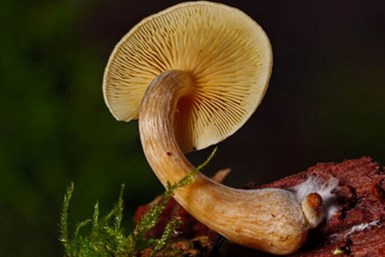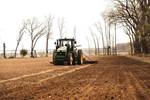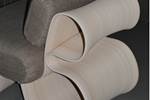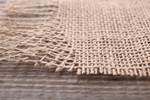University of Bristol studies mycelium composites as alternative building materials
Affordable, lightweight and sustainable composite materials made from mycelium — mushroom roots — may have potential for packaging materials, insulation panels, floor tiles and furniture.

Source | The University of Bristol
A research team from the (U.K.) has suggested that mycelium composites could offer a sustainable alternative to traditional building materials and help address socioeconomic and environmental challenges.
In a paper published in the journal , lead author Stefania Akromah, a PhD student in the Centre for Doctoral Training in Composites Science, Engineering and Manufacturing, suggests that while holding a lot of potential benefits, mycelium composite technology has yet to become established.
Mycelium composites are a class of materials based on mycelium — the roots of mushrooms. These materials, which have gained popularity in Europe and the U.S. in the past decade, are produced by harnessing the ability of fungi to grow by feeding on organic biomass — eliminating the need for high-end manufacturing processes. In fact, mycelium composites can be grown almost anywhere — even at home — without the need for extensive expertise or advanced equipment.
The organic biomass used for the basis of mycelium composites are often obtained from agricultural, agro-industrial and forestry waste streams. There is a wide range of applications for mycelium composites, including packaging materials, insulation panels, floor tiles and furniture.
Mycelium composites are also envisioned as the “next generation of self-healing and self-growing” structures in construction. This can be achieved due to the ability of fungi to respond to light, chemicals, gases, gravity, electric fields and mechanical cues.
Akromah’s suggests mycelium composites can add value to agricultural waste, potentially offering an incentive for investment in the agricultural sector and increasing productivity. Mycelium composite production could also serve as a greener waste management route not only for agricultural waste, but for plastics and other carbon-based waste materials too.
The next step for the authors — Akromah, in addition to Dr. Neha Chandarana, lecturer in sustainable composite materials, and Steve Eichhorn, professor of materials science and engineering — is to fine-tune the properties and production of mycelium composites in order to facilitate the integration of this technology with well-established practices in diverse developing countries.
Related Content
-
Bladder-assisted compression molding derivative produces complex, autoclave-quality automotive parts
HP Composites’ AirPower technology enables high-rate CFRP roof production with 50% energy savings for the Maserati MC20.
-
Partners recycle A350 composite production waste into adjustable-length rods for MFFD
Herone, Spiral RTC, Teijin Carbon Europe and Collins Aerospace Almere recycle A350 thermoplastic composite clips/cleats waste into rods for the all-thermoplastic composite Multifunctional Fuselage Demonstrator’s crown.
-
All-recycled, needle-punched nonwoven CFRP slashes carbon footprint of Formula 2 seat
Dallara and Tenowo collaborate to produce a race-ready Formula 2 seat using recycled carbon fiber, reducing CO2 emissions by 97.5% compared to virgin materials.






